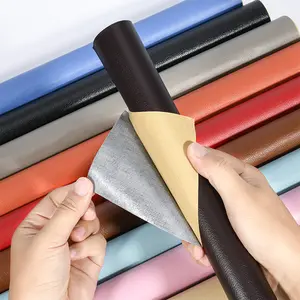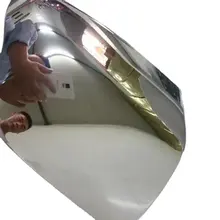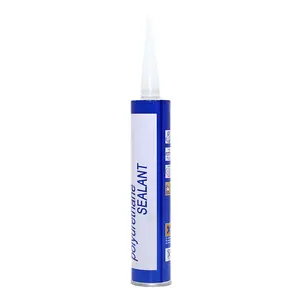An adhesive for leather is a tailor-made bonding solution crafted to address the distinct challenges associated with leather materials. Its composition ensures a bond that is both resilient and supple, capable of enduring the rigors commonly faced by leather products. Whether employed in mending or fabrication, an apt leather adhesive guarantees a robust and lasting adherence between leather pieces or to various other materials.
Types and Composition of Leather Adhesives
The spectrum of leather glue encompasses a variety of formulations, each with its own set of properties. Cyanoacrylate adhesives are celebrated for their swift curing times, making them perfect for quick-fix repairs. Polyurethane adhesives boast a waterproof seal, apt for leather items prone to moisture contact. Epoxy adhesives, known for their formidable bond and heat resistance, are well-suited for leather products exposed to elevated temperatures. A thorough understanding of each variant is crucial for choosing the most appropriate leather adhesive glue for a given application.
Structure and Mechanics of Leather Adhesives
A typical leather to leather glue comprises a base that imparts its sticking power, a carrier such as solvent or water, and performance-enhancing additives that may improve flexibility or environmental resilience. Solvent-based adhesives possess a composition that delivers a potent initial grip and rapid setting time. Conversely, water-based adhesives, while slower to set, are more eco-friendly and simpler to clean up. These components synergistically ensure deep penetration into the leather's surface, forging a bond that is both robust and enduring.
Materials and Properties of Leather Adhesives
The constituents of leather glue adhesive are selected for their ability to provide strength, pliability, and longevity. Common bases include natural rubber, synthetic rubber, and acrylics. Natural rubber imparts vital elasticity for items that necessitate flexibility. Synthetic rubbers yield a more potent bond and boast greater resistance to chemicals and the elements. Acrylics, clear upon setting, are particularly resistant to UV radiation, making them ideal for leather exposed to sunlight. These materials are carefully chosen to ensure that the leather repair adhesive delivers a dependable bond while preserving the leather's natural integrity.
Business Usages and Applications
Adhesive for leather is utilized across various sectors, from automotive—where it plays a crucial role in car seat refurbishment—to fashion, where it is indispensable in crafting leather accessories. In the realm of furniture, leather furniture glue is instrumental in the repair of sofas and chairs, upholding both their aesthetic and structural soundness. In each scenario, the adhesive enhances product longevity, mitigating the frequency of costly replacements and thereby adding business value.
Functions of Leather Adhesives
The fundamental role of leather adhesive repair products lies in their capacity to bond leather to an array of substrates, including various leathers, fabrics, metals, and plastics. Tailored to execute specific tasks such as mending tears, affixing patches, or constructing leather components, the adaptability of these adhesives renders them essential in both repair and manufacturing contexts.
Features of Leather Adhesives
Key attributes of leather to leather adhesive include formidable tensile strength, resistance to moisture and temperature fluctuations, and suppleness post-curing. Certain adhesives boast the advantage of being repositionable before setting, allowing for fine-tuning during application. Others are prized for their expedient drying times, which can bolster efficiency in production settings.
Benefits of Leather Adhesives
Employing a good leather glue can rejuvenate both the look and function of leather items, offering an economical alternative to outright replacement. For enterprises, this translates to diminished material waste and heightened customer satisfaction. The appropriate leather glue repair can also avert further deterioration, prolonging the lifespan of the product and safeguarding the investment in premium leather goods.
How to Use and Maintain Leather Adhesives
Optimal application of leather glue for sofa and other leather articles entails spreading the adhesive on clean, arid surfaces, and clamping as needed to secure a solid bond. To maintain bonded leather items, avoid excessive heat and opt for gentle cleaning with a moist cloth rather than abrasive chemicals, which could compromise the adhesive's bond.
How to Choose the Right Leather Adhesive?
Choosing the correct leather furniture glue requires consideration of the leather's type, the item's intended use, and the environmental conditions it will face. For synthetic leather, a compatible faux leather glue should be selected to ensure harmony with the material and to prevent any potential damage.
How to Clean and Install Leather Adhesives
Removing excess leather cement is typically achievable with a solvent prescribed by the manufacturer before the adhesive solidifies. Installation entails preparing the leather surfaces, applying the adhesive as per the manufacturer's guidelines, and allowing sufficient time for the bond to set.
Target Audience and Meeting Their Needs
The intended demographic for leather glue adhesive products spans professionals in the repair and manufacturing sectors as well as DIY aficionados. Offerings like self adhesive leather repair patches cater to those seeking swift and straightforward repair options, while industrial-strength adhesives target businesses in need of durable, enduring bonds.
Is this adhesive suitable for all types of leather?
Although many leather glue repair products are highly adaptable, not all are appropriate for every leather variety. It is crucial to verify the adhesive's compatibility with the specific type of leather in question, particularly when dealing with delicate materials such as suede or nubuck.
Can the adhesive withstand heavy use and environmental factors?
A premium leather repair adhesive is engineered to endure rigorous use and environmental variables like temperature shifts, humidity, and sunlight exposure. Nonetheless, for extreme conditions, it is prudent to seek out products explicitly labeled as resistant to abrasion, mildew, and UV damage.
How to apply the adhesive for a long-lasting effect?
To achieve a durable effect, ensure that surfaces are pristine and moisture-free prior to the application of the adhesive for leather. An even spread of the adhesive and adherence to the full recommended curing time will culminate in a more tenacious bond. For repairs, the use of supplementary reinforcement, such as a patch, may be necessary to bolster strength.









































 浙公网安备 33010002000092号
浙公网安备 33010002000092号 浙B2-20120091-4
浙B2-20120091-4